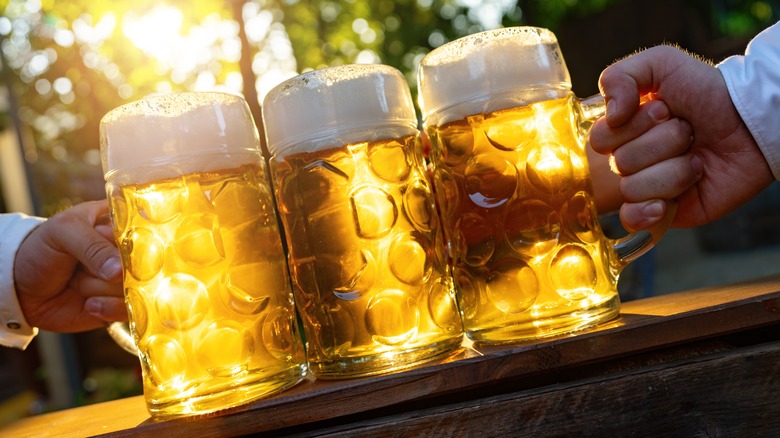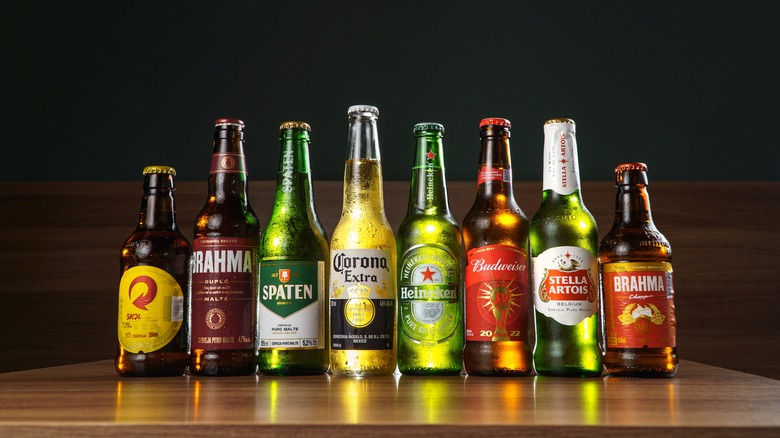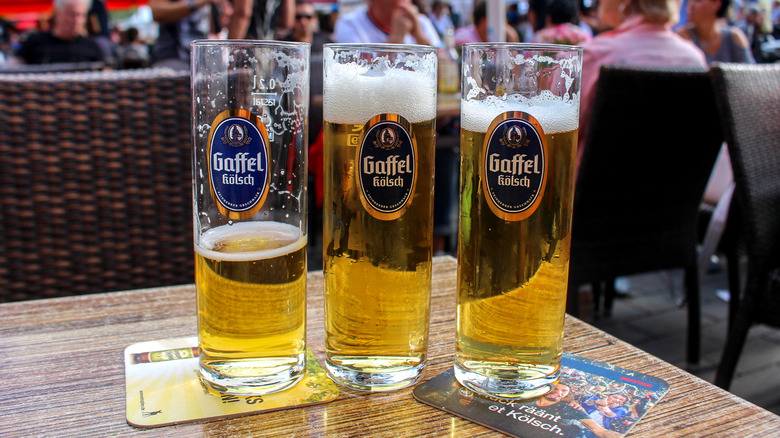What Makes Kolsch Beers Different From Lagers?
For a refreshing sip at the end of a long day, an ice cold beer is pretty much as good as it gets. For beer fans, a Kölsch or a lager may come to mind as being similarly light and easy-drinking, but what is the difference between the two? To explain, first we need to talk about ales.
Beers can broadly be broken down into two main categories — ales and lagers. Ales are made using what is known as top-fermenting yeast. This type of yeast prefers a warmer environment, and the name comes from the fact that it tends to collect at the top of the fermentation tank. On the other hand, lagers utilize bottom-fermenting yeast, which prefer cooler temperatures and hang out on the floor of the tank. The result is a very crisp brew, whereas ales tend to be rounder, fruitier, and more full-bodied.
A Kölsch is where ale meets lager, because it is made using a hybrid technique. This beer style uniquely uses the top-fermenting yeast associated with ales, but is brewed in cooler setting and then held at a very cold temperature. This final storage period is called lagering, so a Kölsch is sometimes called a lagered ale. Depending on your exact definition, it can fit into either category. In summary, Kölsch is a specific style and not a whole category like lagers.
Different types of lagers and Kölsch-style beers
Popular mass-produced lagers such as Budweiser, Corona, Foster's, Heineken, Miller Lite, Pacifico, Sapporo, and Stella Artois are not the only beers that make up the lager category. Beers ranging from a bitter and crisp pilsner to a roasty, toasty, nutty dunkel all belong to the family. A bock is another prominent subcategory with characteristically malty brews that can be light and creamy, or chocolatey and extra boozy, in the case of an eisbock. Of course, there are also many beers that are called lagers and are simply labeled with a more generic descriptor, such as American, Vienna, Czech, or amber. Most lagers are known for a distinct crispness and high carbonation.
On the other hand, the Kölsch style originated in Cologne, Germany, and true Kölsch beers must still be made there. This style actually falls under a Protected Geographical Indication (PGI) label, which means that majority of the ingredients usually come from the area, and the brewing must happen within 30 miles of Cologne. Kölsch is traditionally made with German ale yeast, noble hops, and pilsner malt. However, there are now many craft brewers outside of the region that riff on the style, and push the beverage beyond its typical spiced, fruity, malty, and clean flavor profile.
How to serve a lager and a Kölsch
The refreshing natures of these beers means you will definitely be pleased to drink one on its own — company optional. It's fun to match the beer to the ideal glass. Serve pilsner lagers in tall, slim tapered flutes called pilsner glasses, which help to keep the beer cool and accentuate the lovely gold color. A smaller straight-sided and short-stemmed pokal goblet is best for bolder bock styles. If your glassware selection is limited, any pint glass or beer mug will do just fine for most lagers. Bonus points if you chill the glass!
A Kölsch is traditionally served in a small, straight-sided glass called a stange. The shape and size are intended to keep the beer cold and preserve the carbonation. With only about six ounces of volume, these are perfect for multiple servings in one evening. At restaurants in Germany, your server will keep the stanges coming, as long as they find your glass empty. They mark your count with a tally on your coaster, and you signal that you are finished by placing it on top of your glass. For an at-home Kölsch, a pilsner glass is a great option.
No matter which lager or Kölsch you drink and which glass you choose, the proper way to pour a beer is all about the angle. Creating an inch or two of foam at the top while you pour ensures that you get the full aromatic experience.



